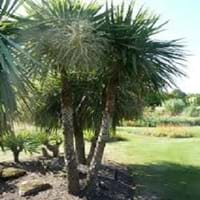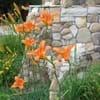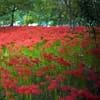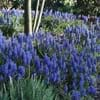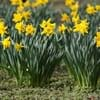Life Span
Perennial
Perennial
Type
Bulb or Corm or Tuber
Broadleaf Evergreen
Origin
China, Japan, Korea
New Zealand
Types
Hybrid Tiger Lilies, Double Orange, Ditch Lily
Not Available
Number of Varieties
Not Available
Habitat
Roadsides, Shaded sites, Woodlands
Coastal Regions
USDA Hardiness Zone
2-8
8-11
AHS Heat Zone
8-1
Not Available
Habit
Upright/Erect
Upright/Erect
Flower Color
Orange, Orange Red, Black
White
Flower Color Modifier
Bicolor
Bicolor
Fruit Color
Green, Brown
White, Blue
Leaf Color in Spring
Dark Green
Burgundy, Dark Red, Copper
Leaf Color in Summer
Light Green
Burgundy, Dark Red, Copper
Leaf Color in Fall
Several shades of Green
Burgundy, Dark Red, Copper
Leaf Color in Winter
Light Green
Burgundy, Dark Red, Copper
Leaf Shape
Lance shaped
Long Narrow
Plant Season
Spring, Summer, Fall
Spring, Summer, Fall, Winter
Sunlight
Full Sun, Partial Sun, Partial shade
Full Sun, Partial Sun, Partial shade
Type of Soil
Clay, Loam, Sand
Loam, Sand
The pH of Soil
Acidic, Neutral
Neutral, Alkaline
Soil Drainage
Well drained
Well drained
Bloom Time
Summer, Late Summer
Late Spring, Early Summer, Summer
Tolerances
Drought
Drought, Salt
Where to Plant?
Ground, Pot
Ground
How to Plant?
From bulbs
Stem Planting, Transplanting
Plant Maintenance
Medium
Medium
Watering Requirements
Average Water Needs, Do Not over Water
Average Water Needs
In Summer
Lots of watering
Lots of watering
In Spring
Moderate
Moderate
In Winter
Average Water
Average Water
Soil pH
Acidic, Neutral
Neutral, Alkaline
Soil Type
Clay, Loam, Sand
Loam, Sand
Soil Drainage Capacity
Well drained
Well drained
Sun Exposure
Full Sun, Partial Sun, Partial shade
Full Sun, Partial Sun, Partial shade
Pruning
Remove damaged leaves, Remove dead branches, Remove dead leaves
Prune if you want to improve plant shape, Remove damaged leaves, Remove dead leaves
Fertilizers
No fertilizers needed
All-Purpose Liquid Fertilizer
Pests and Diseases
Lily Beetle, Slugs
Red blotch
Plant Tolerance
Cold climate, Drought
Drought
Flowers
Showy
Insignificant
Flower Petal Number
Single
Single
Foliage Texture
Medium
Coarse
Foliage Sheen
Glossy
Not Available
Attracts
Beetles
Caterpillar, Moths
Allergy
Not Available
Asthma
Aesthetic Uses
Beautification, Showy Purposes
Beautification, Landscape Designing, Showy Purposes
Beauty Benefits
Not Available
Not Available
Environmental Uses
Air purification
Air purification
Medicinal Uses
chest congestion, Intestinal irritations
Diabetes, Dysentry, Stomach pain
Part of Plant Used
Flowers, Root
Leaves, Root, Stem
Other Uses
Used as Ornamental plant, Used for its medicinal properties
Decoration Purposes, Employed in herbal medicine, Showy Purposes, Used As Food, Used as Ornamental plant
Used As Indoor Plant
No
No
Used As Outdoor Plant
Yes
Yes
Garden Design
Cutflower, Mixed Border, Wildflower
Container, Feature Plant, Foundation, Houseplant, Screening, Wind Break, Tropical
Botanical Name
LILIUM lancifolium
CORDYLINE australis 'Red Star'
Common Name
Tiger Lily
Cabbage Palm
In Hindi
टाइगर लिली
गोभी पेड़
In German
Tiger Lily
Cabbage tree
In French
Tiger Lily
arbre de chou
In Spanish
lirio de tigre
árbol de la col
In Greek
Κρίνος ποικιλόχρωμος
λάχανο δέντρο
In Portuguese
Tiger Lily
repolho árvore
In Polish
Tygrys Lily
kapusta drzewo
In Latin
Lilium
brassica ligno
Phylum
Magnoliophyta
Magnoliophyta
Class
Liliopsida
Liliopsida
Order
Liliales
Asparagales
Family
Liliaceae
Asparagaceae
Clade
Monocots
Angiosperms, Monocots
Tribe
Not Available
Not Available
Subfamily
Lilioideae
Lomandroideae
Properties of Tiger Lily and Cabbage Tree
Wondering what are the properties of Tiger Lily and Cabbage Tree? We provide you with everything About Tiger Lily and Cabbage Tree. Tiger Lily doesn't have thorns and Cabbage Tree doesn't have thorns. Also Tiger Lily does not have fragrant flowers. Tiger Lily has allergic reactions like Not Available and Cabbage Tree has allergic reactions like Not Available. Compare all the properties and characteristics of these two plants. Find out which of these plant can be used as indoor plant. If you are interested to decorate your house and garden, find out aesthetic uses, compare them and select the plant which will beautify your surrounding. Along with beautification, try comparing medicinal and edible uses of Tiger Lily and Cabbage Tree and you can choose the plant having best and most benefits.
Season and Care of Tiger Lily and Cabbage Tree
Season and care of Tiger Lily and Cabbage Tree is important to know. While considering everything about Tiger Lily and Cabbage Tree Care, growing season is an essential factor. Tiger Lily season is Spring, Summer and Fall and Cabbage Tree season is Spring, Summer and Fall. The type of soil for Tiger Lily is Clay, Loam, Sand and for Cabbage Tree is Loam, Sand while the PH of soil for Tiger Lily is Acidic, Neutral and for Cabbage Tree is Neutral, Alkaline.
Tiger Lily and Cabbage Tree Physical Information
Tiger Lily and Cabbage Tree physical information is very important for comparison. Tiger Lily height is 60.00 cm and width 30.00 cm whereas Cabbage Tree height is 610.00 cm and width 240.00 cm. The color specification of Tiger Lily and Cabbage Tree are as follows:
Tiger Lily flower color: Orange, Orange Red and Black
Tiger Lily leaf color: Dark Green
Cabbage Tree flower color: White
- Cabbage Tree leaf color: Burgundy, Dark Red and Copper
Care of Tiger Lily and Cabbage Tree
Care of Tiger Lily and Cabbage Tree include pruning, fertilizers, watering etc. Tiger Lily pruning is done Remove damaged leaves, Remove dead branches and Remove dead leaves and Cabbage Tree pruning is done Prune if you want to improve plant shape, Remove damaged leaves and Remove dead leaves. In summer Tiger Lily needs Lots of watering and in winter, it needs Average Water. Whereas, in summer Cabbage Tree needs Lots of watering and in winter, it needs Average Water.

